Mastering basic hand sewing stitches is essential for any sewing project. These foundational techniques, like the running stitch, back stitch, and blanket stitch, are versatile and practical for repairs, hems, and decorative details. Learning these stitches provides a solid base for both functional and creative sewing tasks, making them indispensable for beginners and experienced sewists alike.
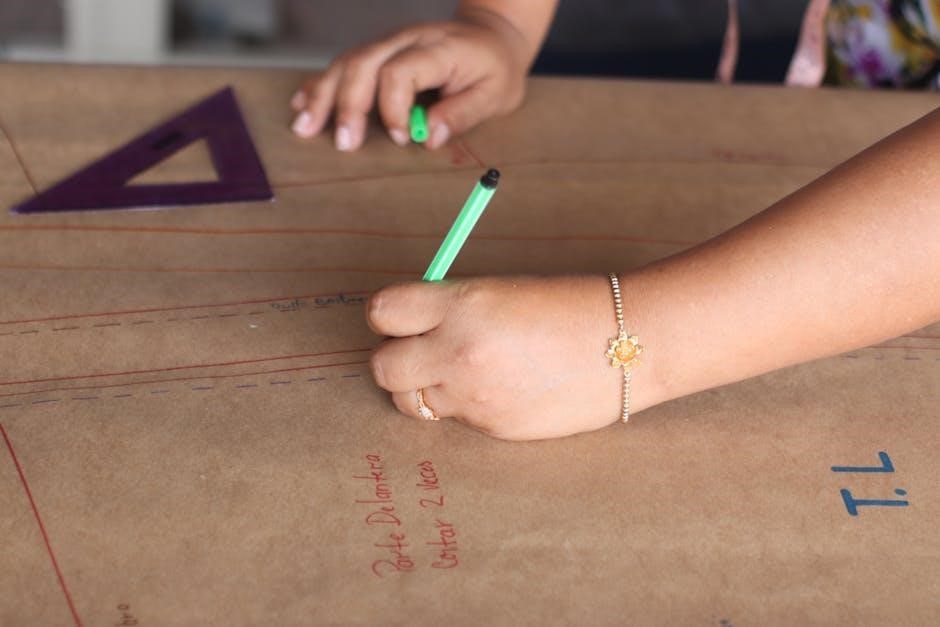
Importance of Hand Sewing in Modern Sewing
Hand sewing remains a vital skill in modern sewing, offering precision and control that machines often cannot match. It is indispensable for repairs, custom detailing, and finishing seams invisibly. Whether fixing a loose button, hemming pants, or adding decorative touches, hand sewing provides a level of craftsmanship that enhances both functionality and aesthetics. In a world dominated by fast fashion, hand sewing allows for personalization and sustainability, enabling sewists to extend the life of garments and create unique, high-quality pieces. Its versatility and timeless appeal make it an essential complement to machine sewing, ensuring that hand sewing techniques remain relevant and valuable in contemporary sewing practices.
Essential Tools for Hand Sewing
Hand sewing requires a few basic tools to ensure successful stitching. A hand sewing needle, available in various types like sharp, blunt, or tapestry, is the primary tool. Thread should match the fabric color and type, while fabric itself is the foundation of any sewing project. Scissors are necessary for cutting fabric and thread accurately. A thimble protects fingers from needle pricks, and an embroidery hoop can help maintain tension for even stitches. Additional tools like measuring tape, pins, and a seam ripper are helpful for precise measurements and adjustments. Having these tools organized in a sewing kit allows for efficient and effective hand sewing, whether for repairs, hems, or decorative details.
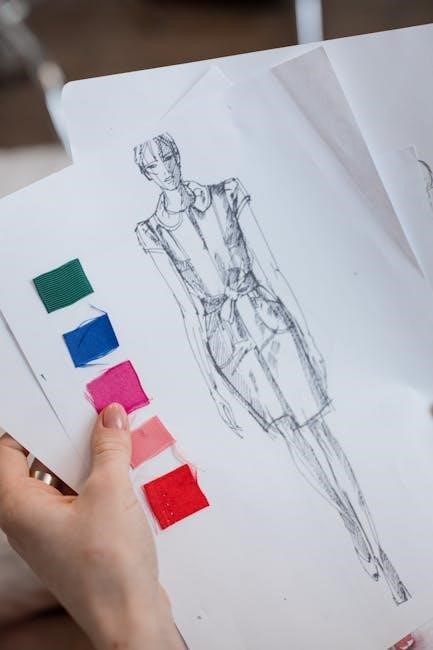
Basic Hand Sewing Stitches
Mastering basic hand sewing stitches is fundamental for sewing. Techniques like the running stitch, back stitch, and blanket stitch are essential for repairs, hems, and decorative details, providing a solid foundation for all sewing tasks.
Running Stitch: The Foundation of Hand Sewing
The running stitch is the most basic and essential hand sewing stitch. It involves inserting the needle in and out of the fabric in a straight, even manner, creating a simple line of stitches. This stitch is commonly used for basting, gathering fabric, or as a base for more complex stitches. Its simplicity makes it ideal for beginners, yet it is versatile enough for various applications. The running stitch is typically the first stitch taught in sewing classes and is fundamental for any sewing project, whether for repairs, embroidery, or constructing garments from scratch.
Back Stitch: Creating Strong and Visible Seams
The back stitch is a strong and visible hand sewing stitch, often used for seams that require durability. It is particularly useful for outlining designs or reinforcing areas that will bear stress, such as buttonholes or pockets. Unlike the running stitch, the back stitch involves sewing backward on the fabric, creating overlapping stitches that lock in place, resulting in a sturdy seam. This stitch is slower to execute but provides exceptional strength, making it ideal for heavy-duty projects or repairs. The back stitch is also a decorative option when visibility is desired. It is an essential skill for sewists, offering both functionality and aesthetic appeal in various sewing applications.
Blanket Stitch: Finishing Raw Edges and Decorative Purposes
The blanket stitch is a versatile hand sewing technique primarily used to finish raw edges of fabric, preventing fraying. It is particularly effective on thick or loosely woven materials. This stitch is also widely used for decorative purposes, adding a visually appealing border to projects like blankets, scarves, or home decor items. The blanket stitch involves sewing forward and backward in a specific pattern, creating a looped edge. It is easy to learn and provides a clean, professional finish. Additionally, the stitch can be adapted by varying thread color or spacing for unique effects. Its dual functionality makes it a must-know stitch for both practical and creative sewing applications.
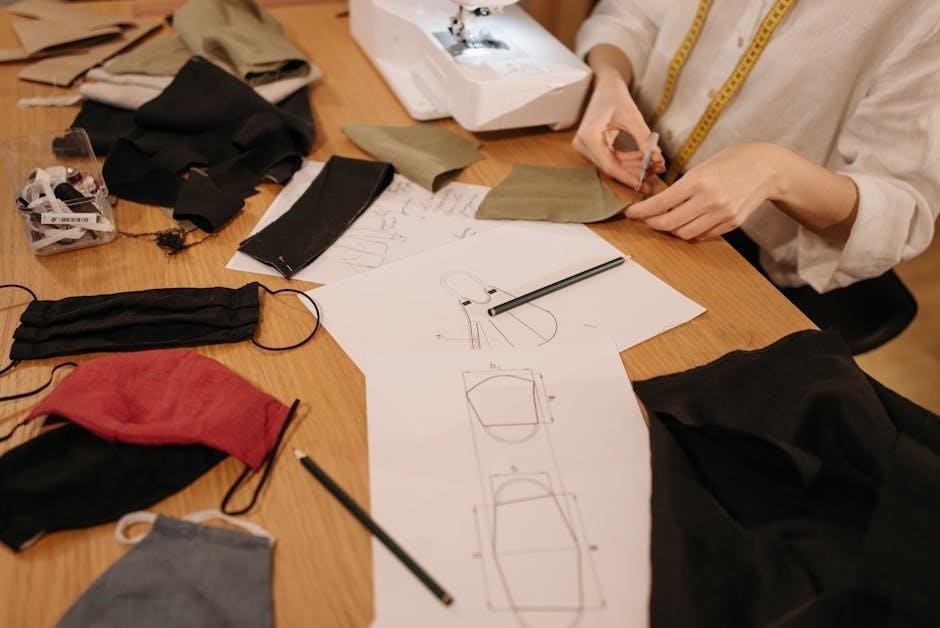
Intermediate Hand Sewing Stitches
Intermediate hand sewing stitches build on basic techniques, offering more complex and refined methods. These stitches, such as the slip stitch and whipstitch, enhance seam finishing and decorative detailing, providing invisible mends and securing edges seamlessly while adding aesthetic touches to projects.
Slip Stitch: Invisible Stitch for Seam Finishing
The slip stitch is a versatile and nearly invisible hand-sewing technique perfect for finishing seams. It is commonly used to sew two folded edges together without visible stitching on the outside. To execute the slip stitch, insert the needle into the folded edge of one fabric piece, then bring it up through the folded edge of the other piece. This creates a tiny, almost imperceptible stitch. The slip stitch is ideal for closing openings in pillows, bags, or garments, ensuring a clean and professional finish. It is especially useful for delicate fabrics or when a seamless look is desired. Regular practice helps master this technique, making it a valuable skill for any sewer.
Whipstitch: SecuringEdges and Adding Decorative Touches
Whipstitch: Securing Edges and Adding Decorative Touches
The whipstitch is a simple yet effective hand-sewing stitch used to secure edges and add decorative touches. It is often used to finish raw edges of fabric, join two pieces of fabric together, or create a decorative border. To execute the whipstitch, bring the needle over the edge of the fabric and insert it near where the thread came up, repeating this process evenly. This stitch is quick and easy to learn, making it perfect for beginners. It is commonly used in home decor projects, such as pillowcases or blankets, and can also be used in garment construction for a decorative finish. The whipstitch is both functional and visually appealing, making it a great addition to any sewer’s skill set.
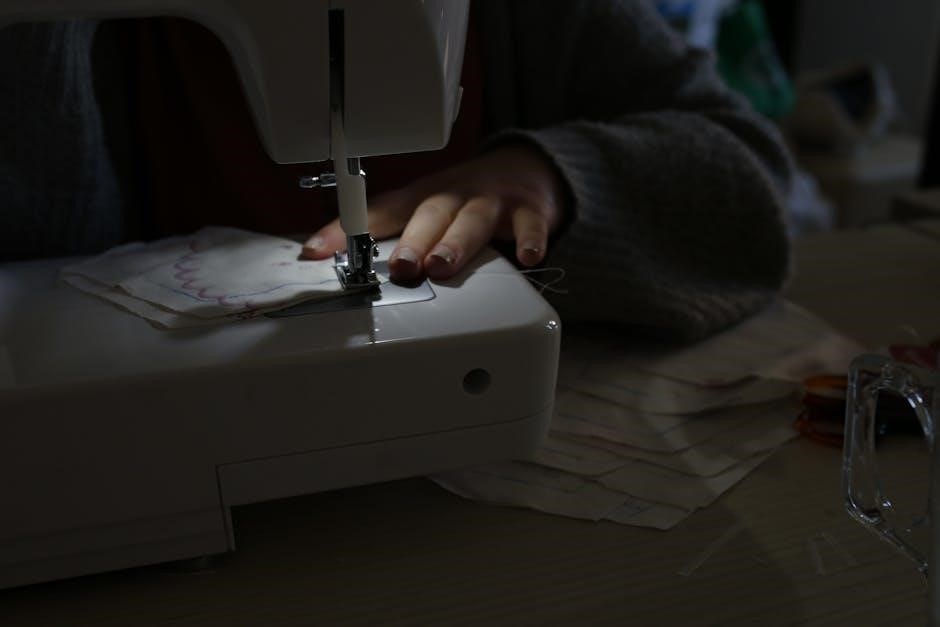
Practical Applications of Hand Sewing Stitches
Hand sewing stitches are versatile tools for repairing clothes, hemming, and adding decorative details. They are essential for extending the life of garments and creating custom finishes.
Hemming Clothes by Hand: A Step-by-Step Guide
Hemming clothes by hand is a practical skill that ensures professional finishes. Start by turning the raw edge of the fabric up by the desired hem allowance and press. Thread your needle with matching thread and tie a knot; Bring the needle up through the fabric at the edge of the hem, then insert it back into the fabric about 1/4 inch away, creating small even stitches. Continue this process, keeping tension consistent to avoid puckering. For a nearly invisible hem, use a whipstitch or slip stitch. Finish by tying a secure knot and trimming excess thread for a clean finish.
Repairing Clothes: Fixing Loose Buttons and Torn Seams
Repairing clothes by hand is a simple yet effective way to extend their lifespan. For loose buttons, thread your needle, sew through the buttonholes, and tie a secure knot. For torn seams, align the fabric edges and sew along the tear using a back stitch for strength. Whipstitch can also be used to reinforce the seam. Always match the thread color to the fabric for a seamless repair. These techniques are quick, require minimal tools, and can save favorite garments from being discarded. Regular maintenance ensures clothes remain durable and look their best, making hand sewing an invaluable skill for everyday repairs.
Decorative Hand Sewing: Adding Embellishments and Details
Decorative hand sewing allows you to add unique touches to your projects. The blanket stitch is perfect for finishing raw edges with a decorative flair, while the running stitch can create intricate patterns. For more elaborate designs, the cross stitch or herringbone stitch can be used to add texture and visual interest. These stitches can also be layered or combined for complex designs. Using contrasting thread colors enhances visibility, making your work stand out. Decorative hand sewing is a great way to personalize clothing, accessories, or home decor items, giving them a handmade, bespoke feel. With practice, you can achieve precise, professional-looking results that elevate your creations.
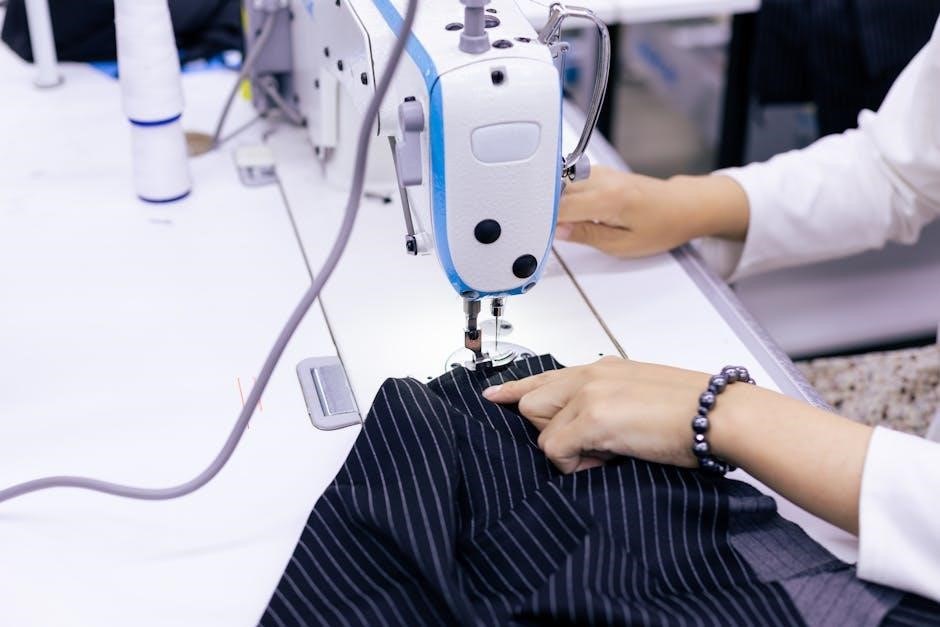
Advanced Techniques and Tips
Advanced hand sewing involves refining stitches for precision and creativity. Combining stitches can create intricate patterns, while perfecting tension ensures even, professional-looking results. Practice makes perfect!
Combining Stitches for Complex Designs
Combining hand sewing stitches opens up endless creative possibilities. For instance, pairing the running stitch with the back stitch creates strong yet decorative seams. The blanket stitch can be layered over whipstitches for intricate textures. Experimenting with stitch lengths and tensions allows for unique patterns. To achieve complex designs, plan your stitch sequence in advance, considering fabric type and desired visual impact. Practice blending stitches on scrap fabric to perfect spacing and alignment. This technique is ideal for embroidery, appliqué, or embellishing garments. With creativity, combined stitches can elevate simple projects into stunning, professional-looking pieces, making hand sewing a versatile tool for both function and artistry.
Troubleshooting Common Hand Sewing Mistakes
Common hand sewing mistakes often stem from uneven stitching, improper thread tension, or incorrect needle placement. To fix uneven stitches, ensure consistent tension by pulling the thread gently but firmly. If stitches are too loose, try shorter stitch lengths. For puckered fabric, check thread tension and fabric grain alignment. Inconsistent stitch spacing can be corrected by marking fabric with a ruler beforehand. Knots or tangles in thread can be avoided by using high-quality thread and cutting it cleanly. For missed stitches, backtrack carefully and reinforce seams. Practice on scrap fabric to refine technique. Regularly steaming or pressing fabric can also help correct minor imperfections. Addressing these issues early ensures professional-looking results and extends the lifespan of your sewn items.
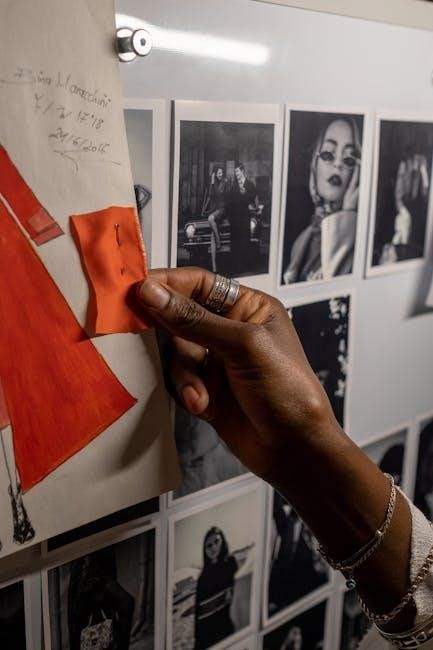
Additional Resources
Explore PDF guides and printable practice sheets to enhance your hand sewing skills. These resources are perfect for beginners, offering step-by-step instructions and practical exercises to master basic stitches.
Printable Practice Sheets for Beginners
Printable practice sheets are an excellent resource for mastering basic hand sewing stitches. These sheets provide clear diagrams and step-by-step guides for stitches like the running stitch, back stitch, and blanket stitch. Perfect for beginners, they allow you to practice and refine your technique in a structured and organized way. The sheets often include space to sew directly on the paper, making it easy to follow along and improve your accuracy. Whether you’re learning to hem clothes, repair seams, or add decorative details, these resources are a valuable tool for building confidence and skill in hand sewing.
Recommended PDF Guides for Further Learning
For those looking to deepen their hand sewing skills, recommended PDF guides offer comprehensive tutorials and detailed instructions. These guides often include step-by-step visuals, patterns, and tips for mastering various stitches. Popular PDF resources cover topics like advanced embroidery, decorative stitching, and specialized techniques. Many guides are designed for both beginners and intermediate learners, providing a progression from basic stitches to complex designs. They also frequently include troubleshooting sections to address common mistakes. Whether you’re interested in improving your sewing precision or exploring creative embellishments, these PDF guides are invaluable for further learning and refinement of hand sewing techniques.